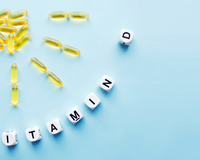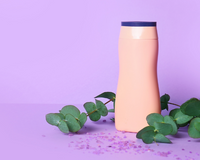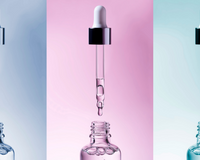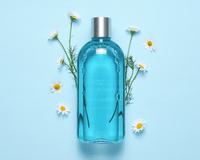Heat Protectant For Hair
Heat protectant for hair and blow dryers may damage hair if used incorrectly, and heat protectant sprays are designed to counteract this. Before blow-drying, curling irons, and straightening hair, heat-protectant sprays are used. As a result, the hair is protected from being worn and dried by hot blow-dry air or heat. Hair that has been straightened or curled may have developed a dry, harsh appearance. We suggest using a heat protectant spray on the lengths and ends of your hair to help prevent dryness and moisture loss from your hair due to exposure to high heat.
To begin, use a tiny quantity on the ends and lengths of your hair and comb them through well. You may open your hair knots so that the heat protectant spray can reach every strand of your hair. Then reapply the hairspray to ensure that it covers your whole head. Once again, tilt your hair forward and reapply the heat-protecting spray to your hair strands. As long as you don't get it on your hair roots, you should be OK. In particular, if your hair is thin and voluminous, you should avoid applying any product below your ear level since it might make your hair seem heavy.
First and foremost, the ends of the hair get torn and hair splits develop because of the high temperature. Because of this, you should apply the heat protectant spray to your hair's ends thoroughly. If your hair is still damp, use a blow dryer to finish drying it. Using curling irons, straighteners or blow dryers before your hair is completely dry may cause damage to your hair.
Heat Protectant For Hair Process
You've not dried your hair sufficiently when you notice smoke coming out of it as you attempt to straighten, curl, or blow it out. After drying your hair, we suggest that you proceed with the application. Even if you use a heat protectant spray, avoid styling your hair with a flat iron or curling iron that is hotter than 230 degrees. After some time, your hair will become dry, dull, and lifeless as a result of styling over this temperature.
Consider your hair type while selecting a heat-protectant hair spray. Using a heat-protective hair spray for your hair type will help you get healthier hair strands. Colored hair may benefit from the use of a heat-protection spray. Hair that has been dyed requires treatments that will restore the color's vibrancy and brightness. The color of colored hair fades more quickly if blow dryers and heat treatments are used on top of each other. Natural, floral extract-containing, paraben- and silicone-free heat protectant sprays should always be your first choice. Because your hair has already been dyed, you should only use natural treatments to maintain it.
Heat Protectant For Hair Procedure
The use of excessive heat on dry hair is a perilous endeavor. It's best not to use heat on your hair since it is already dry. Applying care sprays that provide significant hydration to your hair should only be done on exceptional occasions or under extreme duress. Those with regular hair should nonetheless use heat protection, even if their hair doesn't appear to require it. Normal hair strands may be worn and damaged over time by intense heat. One of the most common reasons of hair loss is excessive heat exposure. Instead of repeatedly blow-drying and styling your hair with tongs, you may use hair styling mousse. The foam may be applied to damp hair and shaped by pressing from the top to bottom with your fingers to create natural waves.
Ponytails, buns, and braided hairstyles don't need you to blow dry your hair. This is a style that you may use often. We propose that you apply nourishing oil creams that don't rinse to get straight and silky hair. After showering and drying your hair, you may apply nourishing oil creams to the ends and lengths of your hair to obtain a smooth look.
After Heat Protectant For Hair
Heat stylers, which are one of the simplest ways to style hair, are practically vital in our daily life. High-temperature hair straightening may be damaging, but it's also true. As a consequence of the drying of the outermost layer of the hair, the proteins in the hair begin to relocate, resulting in dry, damaged, and broken hair.
With that, let's get down to the nitty-gritty.
- Ends that are easy to break
- Follicle nodules that are white
- Hair that is completely dehydrated
- Having a hard time sculpting or brushing.
- Hair that is prone to tangling and matting
- It may lead to hair breakage and other issues.
In order to get the desired result, hair styling products such as blow dryers, curling irons. Straighteners are typically needed. To avoid heat damage, if you're inexperienced with these instruments, you'll usually need a protective spray. While it's a good idea to shield your hair from harm, here's an alternative that's gentler on your hair and the environment. Cosmetics and beauty products, such as commercial heat-protectant sprays, shampoos, and conditioners, can include hazardous compounds that may be breathed or absorbed via the skin. The following are some of the most prevalent compounds that might be harmful to your health.
Choosing Heat Protectant For Hair
It's good to know that you don't have to give up your heaters. Essential oils and natural moisturizing oils may provide a mild barrier to heat while reducing static and nourishing hair strands. A discussion of the components in our DIY heat-protectant spray and why they're effective is provided here. Because of its excellent heat tolerance, we begin this recipe with a little amount of coconut oil. As with cooking, you want to ensure that the oil you're using does not deteriorate or injure your body (or your hair!) before exposing it to heat.
Another good reason to use coconut oil on your hair is that it helps to keep your hair shiny and healthy. Lauric acid, one of the oil's primary fatty acids, may go deep into your hair's shaft for more hydration and protection. Like olive oil, coconut oil is fantastic for your skincare regimen, particularly if you are dealing with a skin condition like acne.









